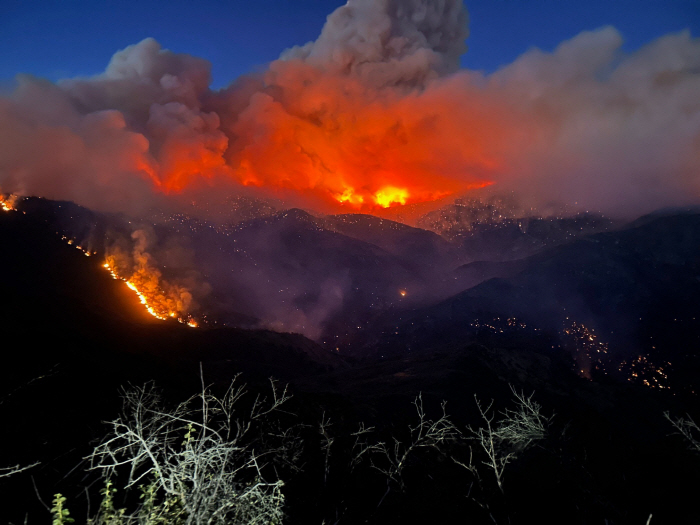Hazardous substances such as ultrafine dust in forest fire smoke and adverse effects on health...There will be 1.4 million premature deaths a year around the world
|
The increase in forest fires has intensified air pollution and amplified concerns that it could have a negative impact on health, and in particular, ultrafine dust (PM2.5) with a diameter of 2.5㎛ or less included in forest fire smoke has been pointed out as a risk factor that can cause various diseases.
The World Health Organization (WHO) sees wildfires as a serious public health crisis, not just an environmental problem, and repeatedly emphasizes the need for active prevention and management of the vulnerable. PM2.5 in wildfire smoke significantly exceeds WHO recommended standards, and it has been reported that every 10㎍/㎥ increase significantly increases all disease mortality by 4%, cardiopulmonary disease by 6%, and lung cancer by 8%. In addition to fine dust, the WHO has also warned of the risk of chronic diseases caused by carcinogens and toxic substances such as benzene and formaldehyde.
In fact, in the 2023 Gangneung and Samcheok wildfire study, 42.9% of heart failure hospitalization, 25.5% of ischemic heart disease, and 9.8% of pneumonia were statistically significant for two years after the wildfire. A survey of Hawaii wildfire victims also reported that 20% experienced long-term aftereffects such as lung damage and nearly 50% of depression and fatigue, and the suicide and drug overdose mortality rate increased by 97% immediately after the wildfire.
In a paper published in the scientific journal Nature on the 19th, Professor Chang Chang of Tsinghua University in China and Professor Marshall Burke of Stanford University in the U.S. predicted that the number of premature deaths from wildfires and ultrafine dust (PM2.5) would reach 1.4 million annually by the end of this century. In the United States, 70,000 additional deaths are expected every year by 2050 in a high-greenhouse gas emission scenario.
Tsinghua University's research team developed a machine learning-based prediction model that can predict the area and smoke emissions of wildfires around the world, quantitatively predicting the impact of future climate change on wildfires and early deaths caused by ultra-fine dust from wildfires by the end of the century.
As a result, compared to 2010-2014 and 2095-2099, early deaths from wildfire smoke are expected to reach 1.4 million people every year in the case of scenarios where greenhouse gases are gradually reduced and temperatures rise by 2.1 to 3°C from before industrialization (SSP2-4.5).
In particular, the health burden caused by the increase in forest fires showed a large gap depending on the region. In the SSP2-4.5 scenario, fire-related deaths were expected to increase 11 times in Africa at the end of the century compared to 2010-2014, while one to two times in Europe and the United States.
Stanford University's research team developed a statistical and machine learning model based on monthly and annual fire observations from 2001 to 2021, predicted PM2.5 concentrations in wildfires across North America in future climate scenarios, and estimated the impact of PM2.5 exposure on future mortality.
As a result, if a scenario (SSP3-7.0) in which greenhouse gas emissions increase and temperatures rise by 3.6 to 4.9℃ compared to before industrialization is applied, 71,420 excess deaths will occur every year in the United States due to PM2.5 exposure by 2050. It is also estimated that the cumulative death toll from wildfire PM2.5 will reach 1.9 million from 2026 to 2055.
This article was translated by Naver AI translator.




